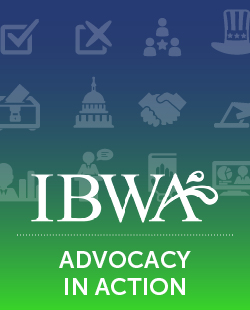Radionuclides
Radionuclides
DECEMBER 12, 2001
THE FOOD AND DRUG ADMINISTRATION SHOULD PROMPTLY ADOPT A NEW 30mg/L STANDARD OF QUALITY FOR URANIUM
Background
On December 7, 2000, the U.S. Environmental Protection Agency (EPA) published a final National Primary Drinking Water Regulation (NPDWR) (65 Fed Reg. 76708) covering radionuclides in public drinking water, specifically: combined radium-226/-228, (adjusted) gross alpha, beta particle and photon radioactivity, and uranium. The effective date for the EPA rule is December 7, 2003.
The Food and Drug Administration (FDA) has already issued a standard of quality for each of these radionuclides, except uranium. IBWA recommends that FDA maintain its current standards of quality for radionuclides and adopt a new 30 µg/L standard of quality for uranium promptly. The current FDA annual monitoring and compliance determination provisions should apply to all radionuclides, including a new uranium standard.
The EPA radionuclides rule established a Maximum Contaminant Level (MCL) for uranium at 30 µg/L. Additionally, the rule reaffirmed the following MCLs adopted by the EPA in 1976, which are the same as the current FDA Standards of Quality [21 CFR§165.110(b)(5)] for:
-
- Combined Radium-226/228 – 5 pCi/L;
-
- Adjusted Gross Alpha – 15 pCi/L, not including radon or uranium; and,
-
- Beta Particle and Photon Radioactivity – 4 millirems/year.
The EPA rule sets out a monitoring scheme for all of the regulated radionuclides. The regulations direct that the results from an initial round of monitoring determine the frequency for additional rounds of monitoring. For example, public water systems with less than detectable levels are permitted to analyze once every 9 years, systems with less than one half the MCL are required to monitor every 6 years and systems with greater than one half the MCL are required to analyze every three years. (For a brief overview of the rule, see attached Quick Reference Guide prepared by EPA.)
Action Needed
Section 410 of the Federal Food, Drug, and Cosmetic Act (FFDCA) requires that FDA review all new EPA regulations for public drinking water systems and determine whether they are applicable to bottled water. FDA must propose regulations for bottled water within 180 days after the effective date of EPA’s public water standards or make a finding that such a regulation is not applicable to bottled water.
The FDA has not established a standard for uranium. As such, IBWA recommends that FDA adopt a new 30 µg/L standard of quality for uranium promptly. In promulgating this standard, FDA should maintain the current annual monitoring and compliance determination provisions that are currently in place for the other radionuclides [21 CFR §129.80 (g)(2)]. The FDA annual monitoring scheme for radionuclides has worked well for a number of years and is protective of public health.


